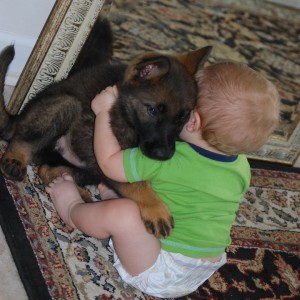 Proper socialization and enough puppy play time is super important for the development into a happy, confident and well-balanced dog.
Proper socialization and enough puppy play time is super important for the development into a happy, confident and well-balanced dog.
Do you want a happy, confident, friendly and well behaved dog? A companion which is a pleasure to be around, without fear he/she will attack people or other dogs? Most everyone does – and this process starts with lots of playing, safe explorations and proper socialization as a puppy and continues for years.
So what does one need to do?
Socialization – making social – well behaved and relaxed with others and their environment, including newly met 2- legged, 4-legged …and winged fellow creatures as well as situations.
For that to happen, you need your canine friend to have a healthy level of confidence and balance.
Socialization – Introducing and familiarizing a canine to new experiences – including people, sounds, places, objects, other animals – in ways that help the dog learn how to respond to and interact with these experiences appropriately and without fear.Very Important: you must be in control of the experiences – you do not want to imprint a fearful disposition in your puppy.
The importance of PLAY
“Puppies need play far more than they need structured learning. Research shows that play fosters impulse control, produces brain-growth factors, and helps create pro-social circuits in the brain. The more our puppies play the more sociable and well-behaved they’ll be. Meanwhile, dogs who’ve had fewer opportunities to play are more likely to be aggressive. This isn’t just due to lack of socialization, it’s that play is vitally important for healthy, lasting growth of the connections between the aggression circuits and the impulse-control center in the brain”. – Lee Charles Kelly
Between the ages of 3 weeks to 4 months, your pup is very impressionable, it is important for your puppy to be exposed safely to a large variety of experiences…people, other animals, places, smells, sounds, sight and so on. Most of the time, because it’s vulnerability to (often deadly) diseases, this will happen close to it’s home environment. Playing with litter mates, exposure to friendly people and handling, living with cats or chickens. Make sure you don’t overwhelm your puppy. Some are more daring and outgoing, others temperament is more cautious and shy. Make all these new experiences fun, safe and happy. – Allow your puppy to safely explore and PLAY – a LOT.
Invite all of your friends and children to handle your puppy as it serves this goal..
It is crucial to carefully introduce a pup to a variety of stimuli every day, and to ensure that the experiences are positive!!!!
“It’s much better to let puppies develop at their own pace without overt external pressure. Yes, we should provide every opportunity for our puppies to learn and explore and become bold and confident, all of which happens best through playing with other pups and adult dogs (and with us!), and comes not at all from being told to sit still, lie down on command, or walk nicely on a leash”. – Lee Charles Kelly
These socialization efforts make the difference in the dog’s outlook on life. Instead of reacting fearfully, and possibly aggressive to new experiences, the dog is comfortable when encountering new things, animals and people.
“Puppies exhibit some of the strangest, seemingly unrelated, and illogical physical movements imaginable. Why? Because in terms of learning, and for the development of motor skills, and even for the proper growth of his young brain, a pup needs to just plain move his little body around constantly in meaningless ways. And he needs to do that a whole lot more than he needs to be taught how to sit still in puppy class. So it seems to me that all too many trainers firmly (yet wrongly) believe they’re not interfering with the puppy’s natural development when they get that little guy to finally sit still and pay attention. And when they do get the puppy to obey, they often get a sense of satisfaction and achievement that, to me, is totally unwarranted because of the potential learning deficits they may have just created in that poor little doggie’s brain.” Lee Charles Kelly
One of the crucial things puppies learn in their interactions with other puppies is bite inhibition. Biting during play is natural and frequent, but what a young dog will learn is that if he bites too hard and causes pain, then the dog he has bitten will not want to play with him anymore, and that is something very bad. So he learns to moderate his bite – something important for play and interactions later in life, when his bite has become very strong.
Puppies go through stages of development. After 4 months, one such phase starts – early adolescence – pay attention to the shifts and adjust your socialization process. Continue exposing him/her to a variety of situations, people and dogs or other animals every day. The more the better – without causing him stress or wanting to withdraw – and without allowing aggression. It can be new – but not overwhelming and threatening. Be there to manage all new exposure and experiences.
Go on frequent outings and explorations.
Allow your puppy or adolescent to approach something new at his pace, with encouragement from you, but more importantly, show him confidence yourself and how to investigate the new thing.
When should you start more formal training?
If sit still, lie down on command, or walk nicely on a leash are to be taught at all (and of course they should be), it’s best to wait until the puppy’s body, brain, and emotions are more developed, which happens naturally and best, at least initially, through free play. And when you do teach a pup these things (preferably not until after 6 or 7 months), it’s best to teach them as part of an active, high-energy game, where the puppy gets to win by obeying. That’s because the more actively the whole organism is involved in the learning process — the dog’s emotions, his kinetic energy, his instincts, and his brain — the better and faster he’ll learn.
If you picked up a dog from the shelter who is already past the puppy stage, you can often tell by how he/she approaches things and people in the environment what his prior experiences are.
A dog who has never seen birthday balloons or a wheelbarrow – might bark at them till you show him it’s ok – it is funny to watch – and a good opportunity to show him how to investigate something new and relax about it.
Bad experiences with other dogs – you might see fear aggression rather than friendly approach or willingness to play. In socialization both the quality and quantity of his exposure to other beings and situations matter. Socialization is more general and category-based than your personal one-on-one relationship with your dog.
What if you dog “missed out” on early socialization? Despair not – he can still become a well socialized dog – but it might take, in some cases, a lot more time and patience.
A Sad Story – as told by Lee Charles Kelly
When my dog Fred was a pup I took him to Central Park every morning to play with the other dogs. (In New York the leash laws are suspended in all city parks until 9 A.M.) And we used to see this affable, engaging older gentleman (he was about the same age I am now, actually, late 50s) with an amazing dog who was totally trained by the time she was four months old. It was remarkable how obedient she was; she’d obey any and all commands without hesitation. He had even gently taught her how to walk next to him, off leash, to and from the park every day. Pretty cool, huh?
Yes, except I ran into him about a year later and he said something very interesting. He said that even though his dog was still very obedient he had a feeling that she was also very unhappy. Then he asked me if I thought dogs could get depressed.
“Of course,” I said. “Why do you ask?”
“Because she’s forgotten how to play,” he said. “She just doesn’t seem to get any fun out life.”
Do not take your puppy to an obedience class. Wait. It’ll be all right. In fact, everything will be fine. Just wait…
 |
| Hanging out together is an important part |
 Proper socialization and enough puppy play time is super important for the development into a happy, confident and well-balanced dog.
Proper socialization and enough puppy play time is super important for the development into a happy, confident and well-balanced dog. 
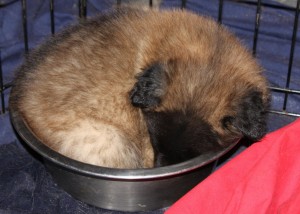 Here are some links to very useful puppy management tips 🙂
Here are some links to very useful puppy management tips 🙂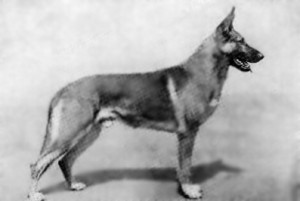
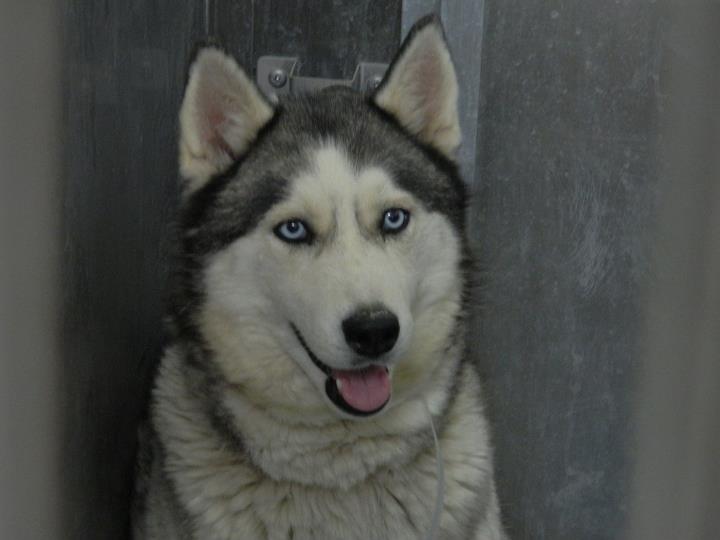
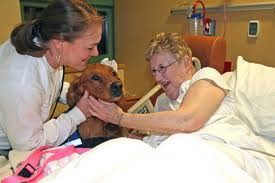 Volunteering with a therapy dog is one of most rewarding services you and your dog can offer. A therapy dog is
Volunteering with a therapy dog is one of most rewarding services you and your dog can offer. A therapy dog is 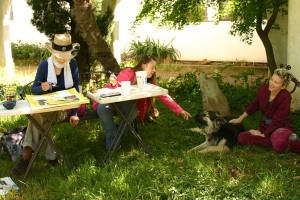 Socializing your dog: It is fun, it is bonding and it can prevent a world of trouble later on. You will never regret the time and effort you spent doing this for your canine friend, and it is most likely the most important thing you can do to prevent aggression problems later on.
Socializing your dog: It is fun, it is bonding and it can prevent a world of trouble later on. You will never regret the time and effort you spent doing this for your canine friend, and it is most likely the most important thing you can do to prevent aggression problems later on.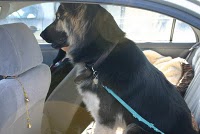
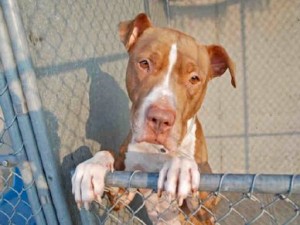 Can dogs feel sad? How do we really know? Is it we are interpreting sad in human terms? Do dogs get depressed?
Can dogs feel sad? How do we really know? Is it we are interpreting sad in human terms? Do dogs get depressed?